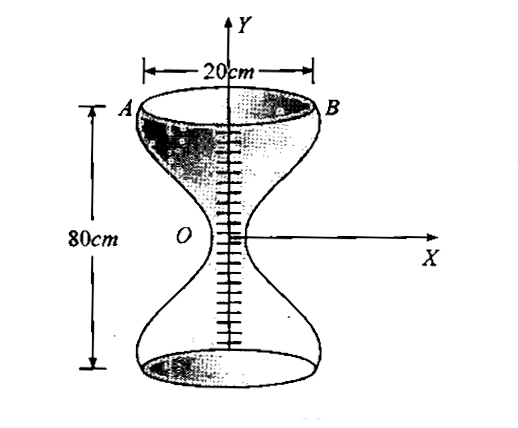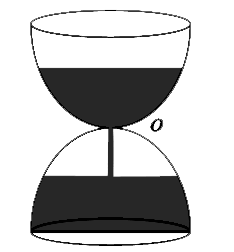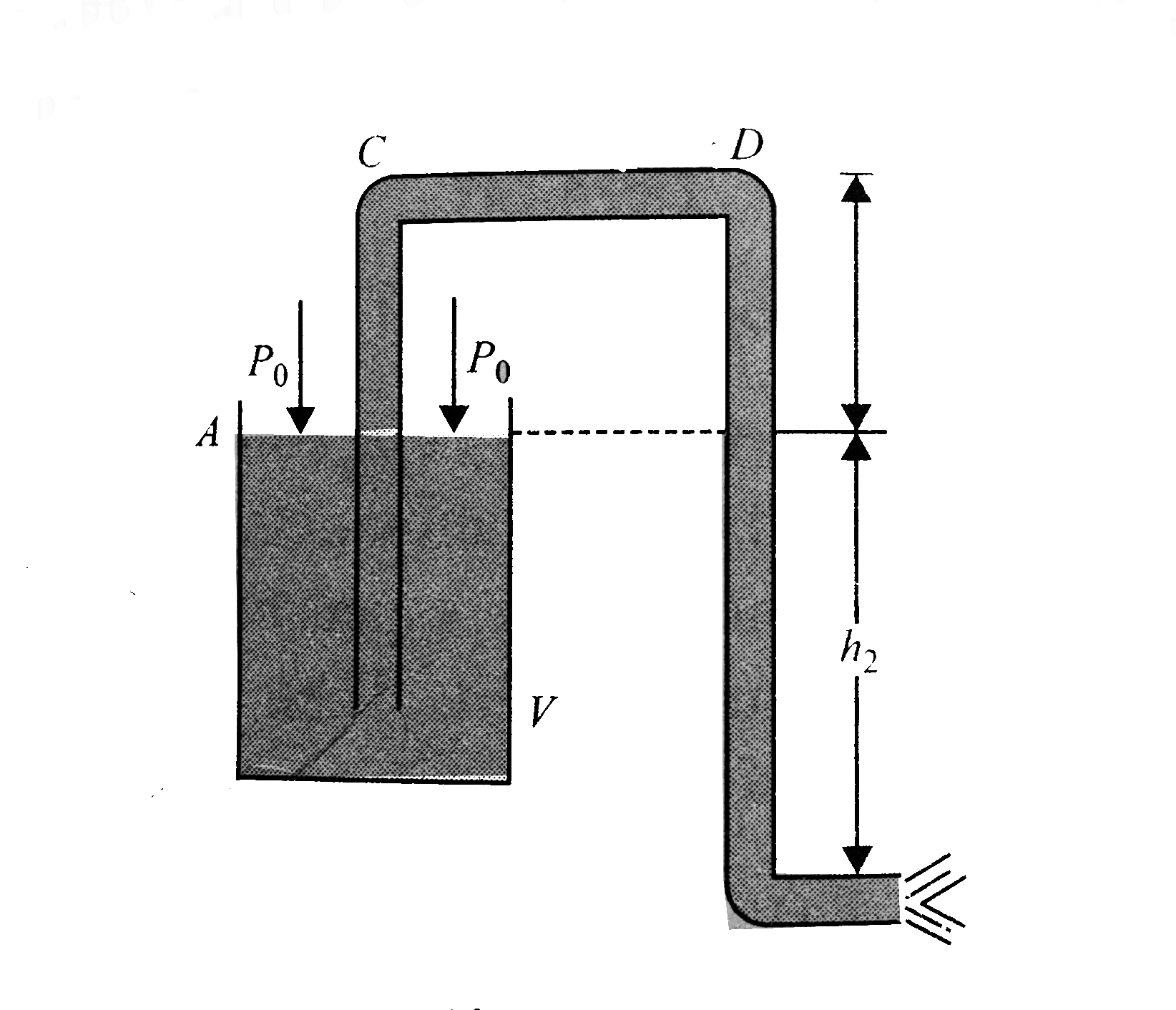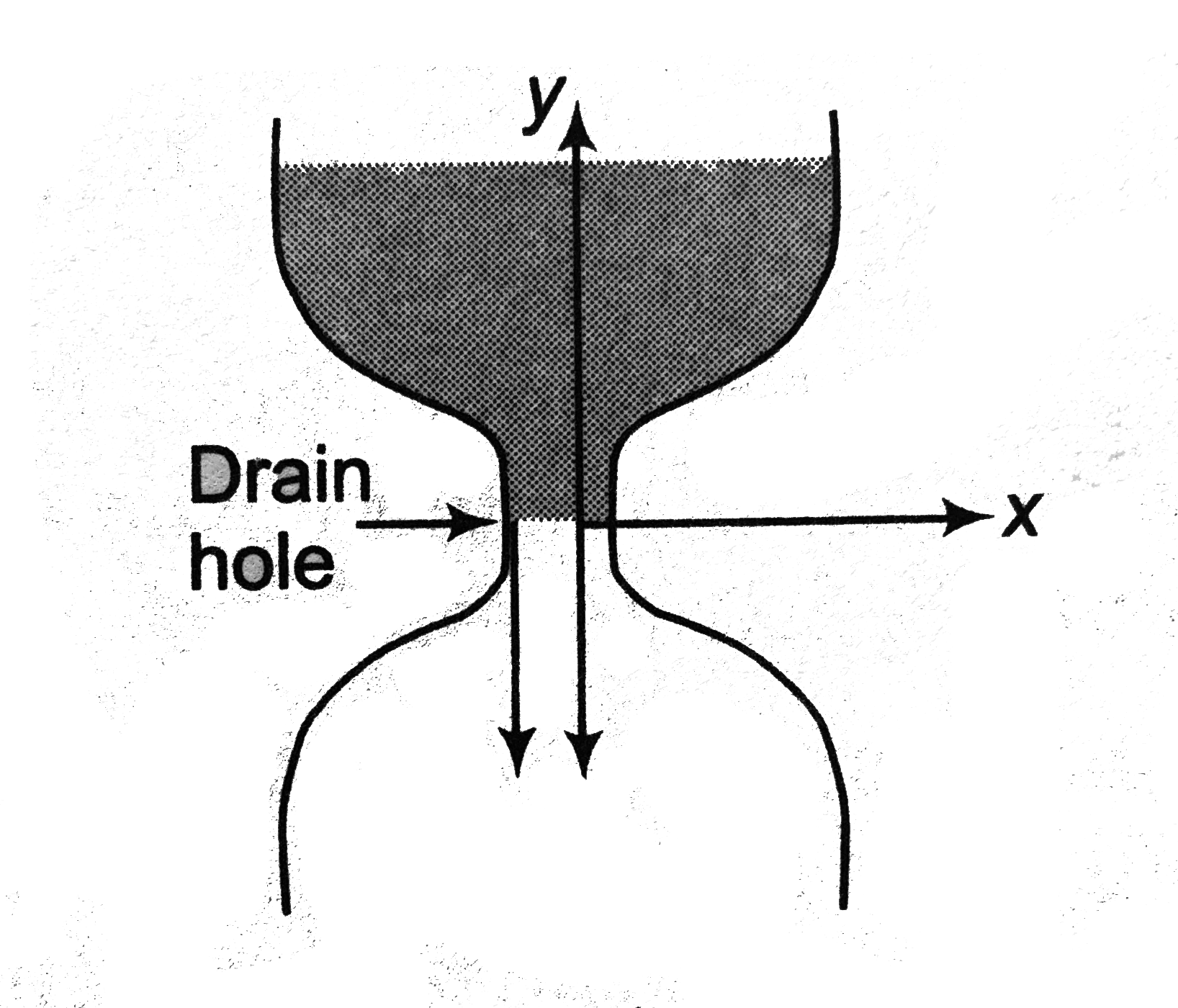A water clock used in ancient Greek is designed as a closed vessel with a small orifice O. The time is determined accrding to the level of the water in the vessel. What should be the shape of the vessel be for the time scale to be uniform. Find mathemtical equation governing curve AOB.

The correct Answer is:
Step by step video, text & image solution for A water clock used in ancient Greek is designed as a closed vessel with a small orifice O. The time is determined accrding to the level of the water in the vessel. What should be the shape of the vessel be for the time scale to be uniform. Find mathemtical equation governing curve AOB. by Physics experts to help you in doubts & scoring excellent marks in Class 11 exams.
Topper's Solved these Questions
Similar Questions
A water clock consist of a vessel which has a small orifice O. The upper contaienr is filled with water which trickless down into the lower contaienr. The shape of the (upper or lower) contaienr is such that height of water in the upeer container changes at a uniform rate. What should be the shape of the container? Assume that atmospheric air can enter inside the lower container through a hole in it taht the upper container is open at the top. Vessel is axially symmetric.
 View Solution
View SolutionA cylindrical vessel of height 500mm has an orifice (small hole) at its bottom. The orifice is initially closed and water is filled in it up to height H. Now the top is completely sealed with a cap and the orifice at the bottom is opened. Some water comes out from the orifice and the water level in the vessel becomes steady with height of water column being 200mm. Find the fall in height(in mm) of water level due to opening of the orifice.
[Take atmospheric pressure =1.0×105N/m2, density of water=1000kg//m^3andg=10m//s^2. Neglect any effect of surface tension.]View Solution
Knowledge Check
- Question 1 - Select One
A tube of uniform cross section is used to siphon water from a vessel V as shown in the figure. The pressure over the open end of water in the vessel is atmospheric pressure (P0). The height of the tube above and below the water level in the vessel are h1 and h2, respectively.

Determine the velocity vB of the water issuing out at B.AvB=√2gh2BvB=√2h(h1+h2)CvB=√2h(h2−h1)DvB=√gh2 - Question 2 - Select One
The Mayan Indians lived in Mexico thousands of years before the Spanish arrived in the 1500s. The Mayan's were an intelligent, culturally rich people whose achievements were many. They had farms, beautiful places and cities with many buildings. The Maya's knew a lot about nature and the world around them. This knowledge helped them to live a better life than most people of that time because they could use it to make their lives more comfortable and rewarding. Knowledge about tools and farming for instance, made their work easier and more productive.
The Maya's believed in many gods, including Rain God, Sun God and Corn God. They built large temples to honour their gods.
Skilful workers built cities around these temples. It was difficult for them to construct these cities because they had no horses to carry the heavy stones they used to build with. Workers had to carty all of the building materiais themselves. Today, many of these ancient Mayan cities and temples are still standing. Although the cities that the Maya's built were beautiful and the people worked hard to build them very few of the people lived in them. Usually, only the priests lived in the cities.
The other people lived in small villages in the forest. Their houses were much simpler than the elaborate structures in the cities. They lived in small huts with no windows, The walls were made of poles covered with dried mud and the roof was made of grass or leaves. Most Maya's lived a simple life close to nature.
The Mayan priests studied the Sun, Moon, Stars and Planets. They made a calendar from what they had learnt. The year was divided into 18 months of 20 days each with 5 days left over. The Mayan calendar was more accurate than the European calendars of the time.
Around the year 800, the Maya's left their villages and beautiful cities, never to return. No one knows why this happened. They may have died from an infectious disease. They may have left because the soil could no longer grow crops. Archaeologists are still trying to find the lost secrets of the maya's. They are still one of our greatest mysteries.
Many Mayan cities and temples can be found in good shape even today because theyAare well builtBare not very oldChave been rebuiltDare being taken care of
A cylindrical vessel of height 500mm has an orifice (small hole) at its bottom. The orifice is initially closed and water is filled in it up to height H. Now the top is completely sealed with a cap and the orifice at the bottom is opened. Some water comes out from the orifice and the water level in the vessel becomes steady with height of water column being 200mm. Find the fall in height(in mm) of water level due to opening of the orifice.
[Take atmospheric pressure =1.0×105N/m2, density of water=1000kg//m^3andg=10m//s^2. Neglect any effect of surface tension.]View SolutionA tank with a small orifice contains oil on top of water. It is immersed in a large tank of the same oil. Water flows through the hole. Assuming the level of oil outside the tank above orifice does not change. a. What is the velocity of this flow initially? b. When the flow stops, what would be the position of the oil-water interface in the tank? c. Determine the time at which the flow stops. Density,of oil 800kg/m3.
 View Solution
View SolutionA thermocol vessel contains 0.5kg of distilled water at 30∘C. A metal coil of area 5×10−3m2, number of turns 100, mass 0.06kg and resistance 1.6Ω is lying horizontally at the bottom of the vessel. A uniform time-varying magnetic field is set up to pass vertically through the coil at time t=0. The field is first increased from zero to 0.8T at a constant rate between 0 and 0.2s and then decreased to zero at the same rate between 0.2and0.4s. the cycle is repeated 12000 times. Make sketches of the current through the coil and the power dissipated in the coil as function of time for the first two cycles. Clearly indicate the magnitude of the quantities on the axes. Assumes that no heat is lost to the vessel or the surroundings. Determine the final tempreture of water under thermal equilibrium. Specific heat of metal =500jkg−1K−1 and the specific heat of water =4200jkg−1K−1. Neglect the inductance of coil.
View SolutionThe shape of an ancient water clock jug is such that water level descends at a constant rate at all time. If the water level falls by 4cm every hour, determine the shape of the jar, i.e. specify x as a function of y. The radius of drain hole in 2mm and can be assumed to be very small compared to x.
 View Solution
View SolutionA wide cylindrical vessel 50cm in height is filled with water and rests on a table. Assuming the viscosity to be negligible, find at what height from the bottom of the vessel a small hole should be perforated for the water jet coming out of it to hit the surface of the table at the maximum distance lmax from the vessel. Find lmax.
View SolutionRavi was performing some experiements related to the laws of chemical combination in the science laboratory under the guidance of his chemistry teacher Mr. John. Ravi found that when he burned 1 gram of hydrogen gas in 8 grams of oxygen gas in a closed vessel, he obtained 9 grams of water. He repeated this experiment many times but obtained the same results every time
(a) Write a balanced chemical equation for the reaction between hydrogen and oxygen to form water. Also write the names of all the substances involved below their formulae in the equation
(b) What are the reactants and products in the above reaction ?
(c) Which law of chemical combination is illustrated by the fact that when Ravi burned 1g of hydrogen in 8g of oxygen, he obtained 9g of water ?
(d) What mass of water will be obtained if 1g of hydrogen is burned in 10g of oxygen ? Which law of chemical combination will govern your answer ?
(e) What values are displayed by Ravi in this episode ?View Solution

